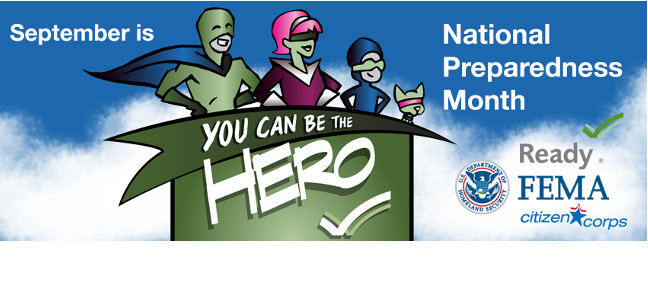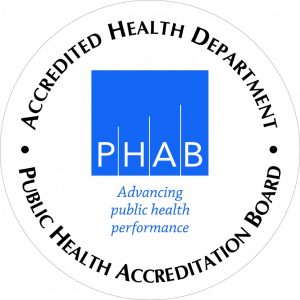September is National Preparedness Month. National Preparedness Month encourages Americans to take steps to prepare for emergencies in their homes, businesses, schools, and communities. There are four basic steps to being prepared. Those are 1) Be Informed, 2) Make a Plan, 3) Build a Kit, and 4) Be Involved.
Links are provided so that you may visit the website and get the full details.
Be Informed
The best way to be informed is to know what threats you might face BEFORE it happens and make plans as to how you will handle it. Every community has hazards and faces threats. There are common needs for all hazards. Listed below are some of those needs.
- Physical safety – regardless of the hazard, you must arrange for the safety of you and your family.
- Communications – the number one problem encountered in every disaster is communication failure. Be sure you have ways to keep in touch with each other.
- Emergency Kit – Regardless of the type of disaster, you will need an emergency kit to survive.
- Resolve to be ready – This year’s campaign focuses on ‘Family Connection’ to reinforce the importance of parents including their children in preparedness conversations in advance of potential disasters. The Ready campaign makes an emergency preparedness resolution easy to keep by recommending families consider these three ideas when making a plan: who to call, where to meet, and what to pack.
Make a Plan
Make your plan fit YOUR needs. Identify the most likely hazards for your area. You can find out what these risks are by contacting local government officials, such as the County Emergency Management Agency. Be sure to know what type of warnings (sirens, cell phone, PA system, etc.) to expect at your workplace, school, and at special events you attend. Work with your neighbors, relatives, and friends to make your plan work for you.
Plan for YOUR risks.
- Functional Needs – Plan for functional needs (70% of American have a functional need)
- Loss of power-virtually everything needs power
- Infants, children, pets-Formula, Diapers, Entertainment, Pet Food
- Seniors-Medications, DME, special dietary needs, oxygen, assistance pets
- Different locations-Home, work, school, sports complex, church, vehicle, places you visit
Build a Kit
Basic kit – To have an effective kit, it should contain supplies for a minimum of three days. It should contain non-perishable foods and, at least, one gallon of water per person per day.
Maintain Your Kit – Change stored food and water supplies every six months and update your kit as needs change.
Different Kits for Different Locations
- Home – Essential food, water and supplies for at least three days.
- Work – This is your “Grab n Go” kit with supplies for at least 24 hours.
- Vehicle – Have items such as jumper cables, flashlights and extra batteries, first aid kit and necessary medications, food items containing protein such as nuts and energy bars, canned fruit and a portable can opener, water for each person and pet in your car, warm clothes, gloves, hat, sturdy boots, jacket, extra change of clothes, blankets or sleeping bags, flares or reflective triangle.
Get Involved
By volunteering BEFORE the disaster, you can perform a needed service, gain valuable experience, and help your community be prepared.
PREPAREATHON is September 30, 2014. This is an opportunity for individuals, organizations, and communities to prepare for specific hazards through drills, group discussions, and exercises. Learn more at www.community.fema.gov.


